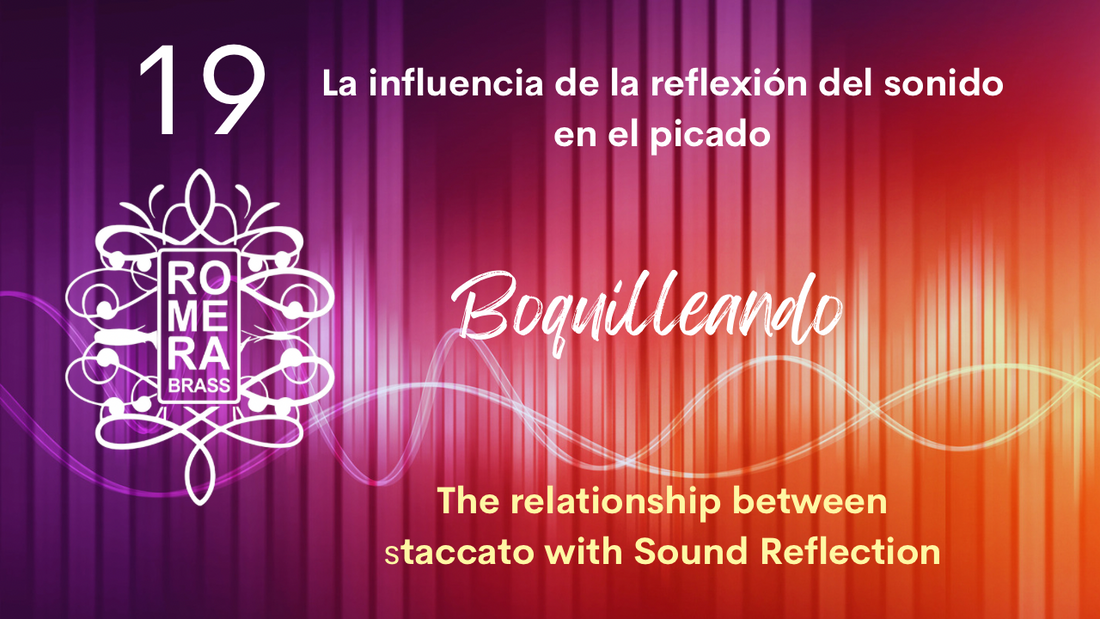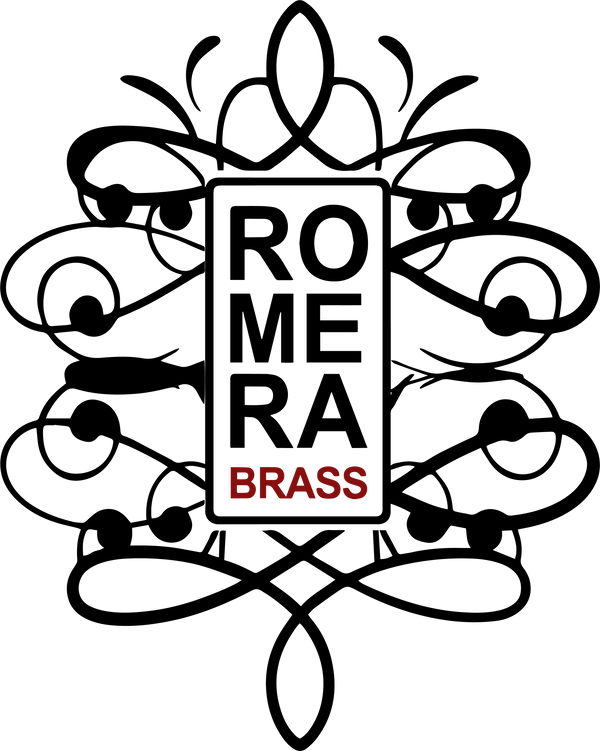
19. The influence of sound reflection on the staccato
Share
NOTE: Transcription of the text of the video, you can translate it into other languages with the Google translator
Hello Hello Brass family
In this new video number 19 of boquilleando I will explain the relationship between the staccato with sound reflection, since I made a small comment without going into it in depth. In the last video number 16 of Boquilleando and I am asked if I can expand it a little more.
The phenomenon of sound reflection has importance in the brass instruments. In the stacatto, as we are going to see today, but also in the flexibility, in the high notes, in the low notes, on long notes. Well, in fact, in all the technical areas we need to touch a brass instrument.
I will briefly review what the acoustic phenomenon of the sound reflection is and we will talk about the importance it has on the staccato.
Without further ado, we begin.
Let me explain quickly what the reflection of sound is and I invite you to watch chapter number 16 of Boquilleando where I speak about the sound reflection.
Sound reflection is a very simple thing that we all know. And for example if we have a wall here. A wall and we produce a sound. This sound travels in waves sound. These sound waves, when hit or hit the wall this are reflected in another direction.
Hey do not pass through the wall, but they are reflected in one or in another direction. There can be a multitude of directions that this sound wave travels.
This simple thing that everyone and we all know is the acoustic phenomenon, the most important to find our better mouthpiece, since the sound wave will behave very differently according to the way each musician plays.
That is why I insist so strongly that the same mouthpiece cannot sound for all the same. There are so many variables: vibration of the lip, pressure and air speed, among many others hings. In each musician are different and this makes it impossible for them to have the same sound, even if the mouthpiece is the same.
We will explain sound reflection and the importance it has on the staccato. First, we analyze what happens when we make a staccato. We have two parts.
First, a more mechanical part.
By this I mean that we have to perform an action and we are who control what we are doing. We push the air, remove the tongue so that air can pass through and we vibrate the lip. This action is carried out in each staccato and we are the ones who we control what we are doing.
And we will have second part which we can't control. When the sound wave passes to the inside of the mouthpiece. There are so many variables to try to explain the relationship of the stacatto with the sound reflection hat is impossible analyze all options.
Let's go with some examples, but always on the assumption that the technical part you have is good: the air, the tongue, the vibration of the lip, etc.
If all this is not right, it will be the first thing you will have to solve. To have a good staccato, the mouthpiece has to be in balance with the air pressure that we are pulling. When we made the first note inside the mouthpiece, it is necessary to create a certain pressure, neither too much nor too little. The right one.
The first stacatto we always do is the most complicated. Hasn't it happened to you that you are in the orchestra and have not played for a long time and have a single staccato and you are insecure?
It is because the inside of the cup does not we have a certain pressure or resistance. If we make a simile with a parachute jump, the first note would be when we jump from the plane and we jumped into the void.
We have no resistance, but when we conducted a second staccato, it's as if we already carried the parachute open. The mouthpiece is filled with air and creates a certain resistance that gives us peace and greater security to carry out the following staccato.
This resistance is produced by the sound reflection or pressure of the air. Call it whatever you want, but it is fundamental to have a good staccato.
I tell you a first example, a musician who throws little air and plays with a very deep cup. his type of musicians usually fail the first note. You can look at chapter number six of the blog, also from Boquilleando, where I talk about why we can fail the first note, since it does not create the sufficient pressure inside the mouthpiece.
The musician, as he pulls little air all the sound wave goes to the instrument and the pressure inside the cup is not created to carry out the next staccato. Let's go with another example, but the truth is that I could give as many examples as musicians exist or mouthpiece are available on the market, because every combination of musician, different mouthpiece, he way of playing... The result will be fully different.
This is why it is so complicated to talk about a few examples in concrete.
Now imagine a musician who plays with a lot of air pressure, high air speed, with a lot of strength, but it is playing with a cup quite small compared to the other, it is smaller and so what will happen to him is that the air will immediately saturate the cup and the cup will be filled with air. And it is very complicated to redo a staccato because the same pressure that is inside prevents us from making a second staccato and may also ail the note.
As I mentioned before, the pressure and speed of the air we throw has to be in balance with the mouthpiece and also with the instrument that we are playing. And now you are sure to ask yourselves the question.
What resistance do we need in order to have a good staccato?
Too much or too little resistance? can be prejudicial to make the staccato? The truth is I do not know, we can only know analyzing the air, the pressure, air speed of each musician.
If you come to my workshop to make a custom, personalized mouthpiece, we will work on all these aspects in order to find the balance between the way of playing and the instrument. In this video we have seen the influence of the reflection of sound on the staccato.
See you in the next video.
I look forward to your questions and comments.
Greetings and lots of music.
